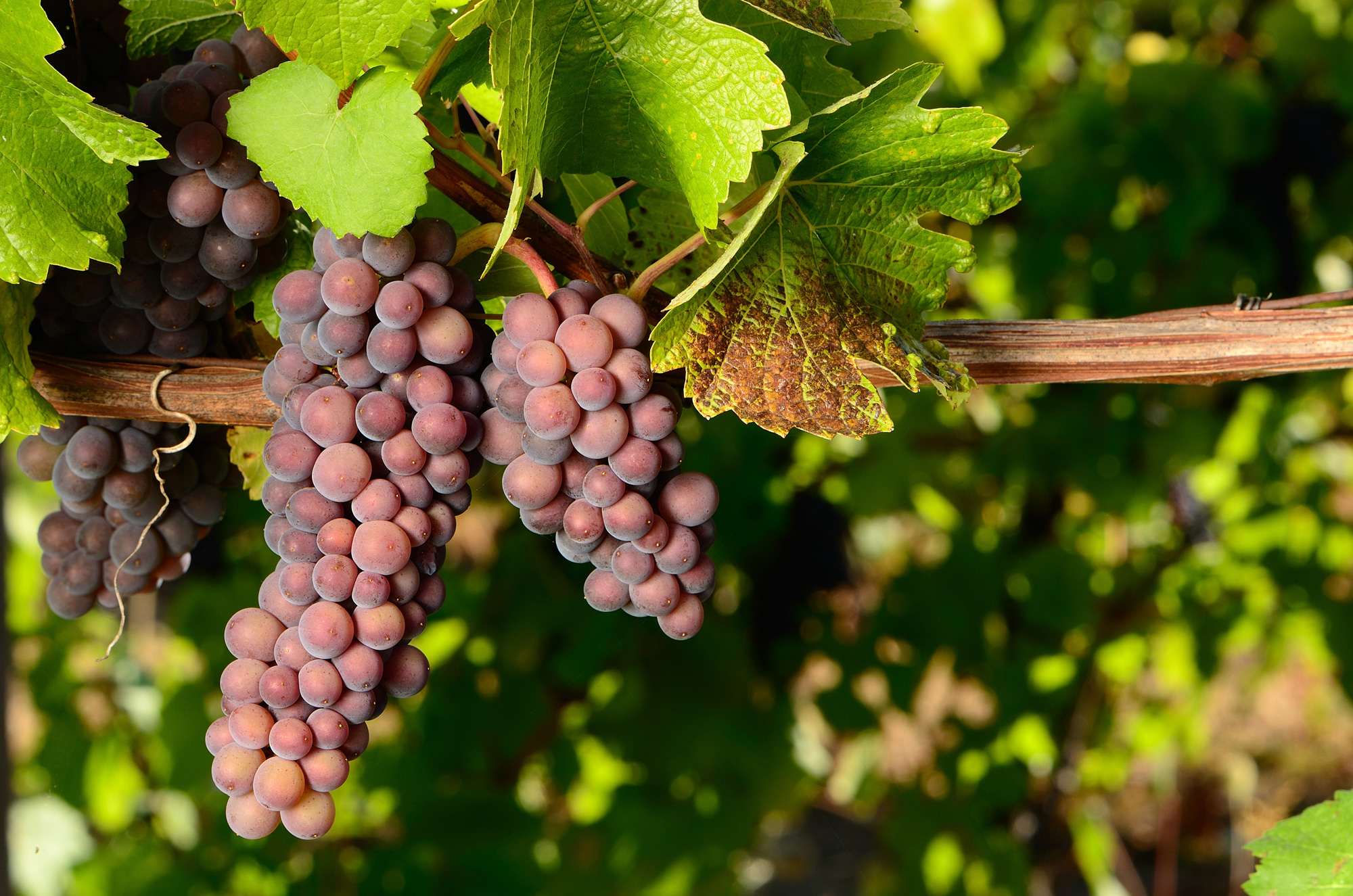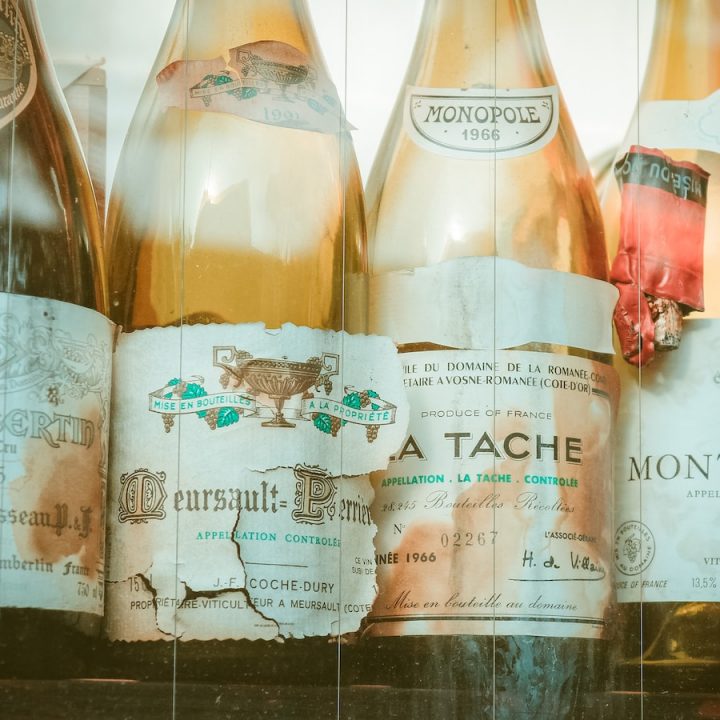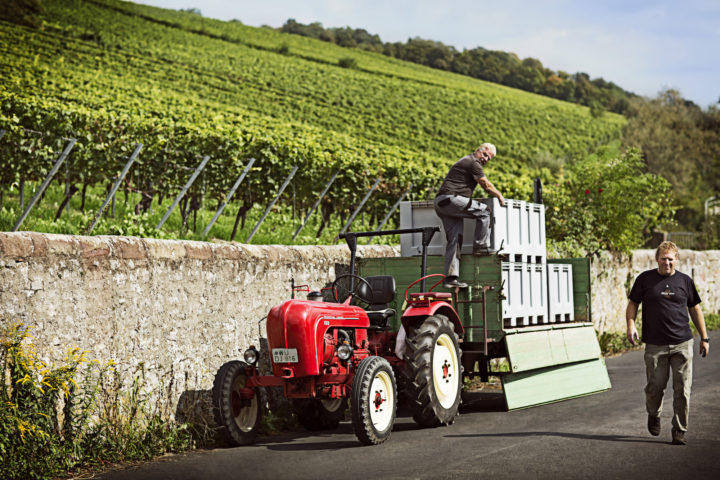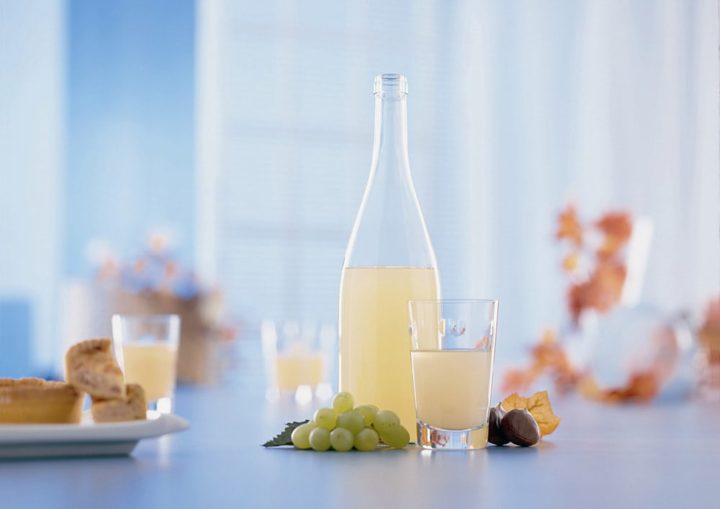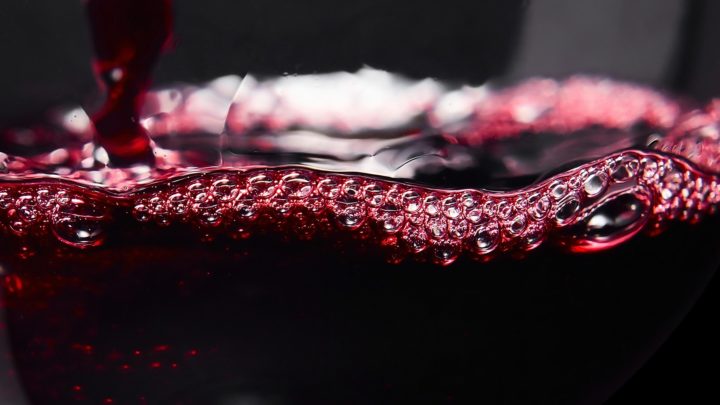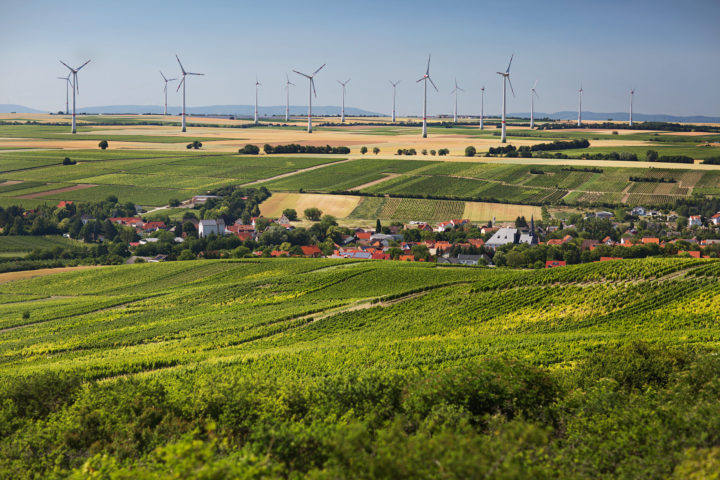Pinot gris or grigio is a white wine grape variety created by a mutation of Pinot noir. Its name derives from the blue-gray color of its grapes, which develops during the ripening phase. Despite its dark berries, the thin-skinned fruit contains few pigments, which is why Pinot Gris does not produce red wines, but is used to make white wine.
Wines from Pinot gris can be roughly divided into three styles: Light and bright summer wines from the steel tank, strong and color-intensive variants from large wooden barrels and full-bodied wines from the barrique. In addition to these three stereotypes, there are some regional specialties, such as the residual to noble sweet wines from Alsace or Baden. In most cases, however, Pinot Gris is vinified dry.
The world’s most popular Pinot Gris are clearly the light summer wines from Italy’s South Tyrol. These wines gained immense popularity in recent decades and ensured that the Italian name of the grape variety is almost exclusively associated with this style – Pinot grigio!
In this article you will learn the most important details about the grape variety, its origin, its taste qualities and what dishes it goes best with.
Pinot Gris – origin & history of the grape variety
A member of the Burgundy family, the original home of Pinot gris is in the Rhône Valley (France). This characteristic the vine has in common with its better known relatives such as Pinot blanc and Pinot noir.
In medieval Burgundy, a grape variety with pale red berries was already known as Fromenteau. It is believed that it was an ancestor of the present variety. From Burgundy, the grape variety first came to Champagne and later found its way to Germany.
Supposedly, Pinot gris reached Hungary in 1375 through Charles IV and was cultivated there by Cistercian monks at Lake Balaton. This assumption explains at least the Hungarian name of the grape variety Szürkebarát (engl. Grey Monk).
Almost 200 years later, the vine is said to have returned to France to Alsace, where many winemakers marketed it under the name Tokaj. In 2007, the European Union protected the term as a protected geographical indication. This made it illegal for French winemakers to continue marketing their Pinot gris under this name. Tokay is a sought-after sweet wine from the Tokaj region (Hungary).
Rediscovery of the grape variety
In 1711 Johann Ruland (merchant from Speyer) discovered some vines of Pinot gris in abandoned vineyards. He recognized their quality, saved the plants, which he first planted in his own garden and later ensured their distribution. In his honor, Pinot Gris is also known in Germany under the synonym “Ruländer”. In the meantime, however, this name is understood as a completely separate style for wines from the grape variety.
The high quality of its wines made it popular with winemakers in the 19th century and ensured that the grape variety is known under many regional names. Blauer Riesling, Grauer Clevner / Grauer Klevner and Auvergne gris are only three of the total 277 official designations for the Pinot Gris.
In Germany, the vine is classified under the name “Ruländer”. However, the synonyms “Grauburgunder” and “Grauer Burgunder” are also permitted for German wines.
Pinot Gris – A mutation of Pinot Noir
Strictly speaking, Pinot gris is not a variety in its own right, but merely a color mutant of Pinot Noir, in which two special genes are responsible for its dark coloration. In Pinot gris, one of these genes is inactive, which is why its grapes contain less colorants and are not suitable for the production of red wines. The gray Burgundy owes its name to the reddish-greyish shimmer of its berries.
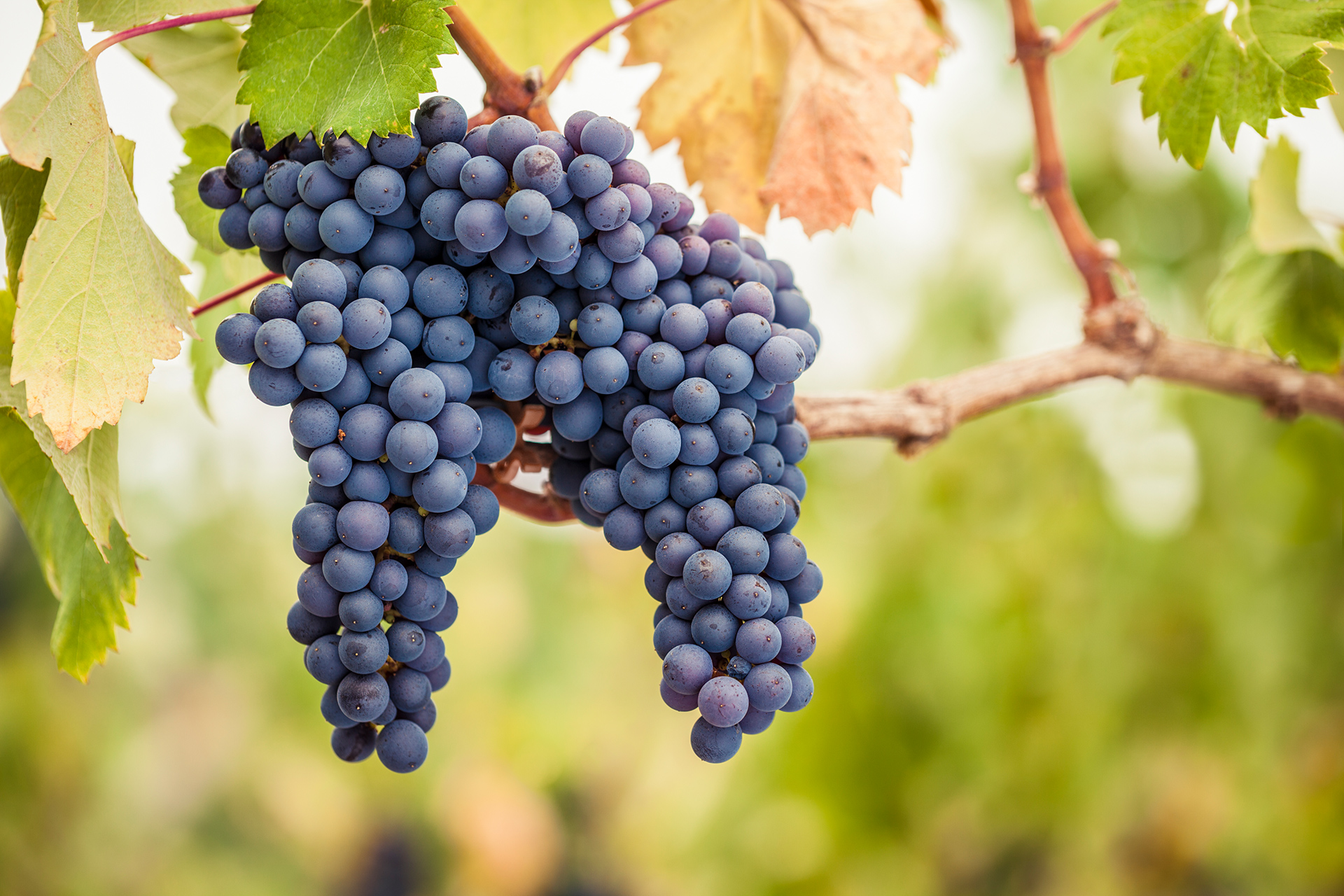
Pinot blanc (Pinot blanc), the lightest color variation of the Pinot family, is similar. In fact, both genes responsible for color are inactive in this grape, which is why it is a true white wine grape.
Due to the great similarity, it is sometimes confused with Savagnin Rose. However, it is a subspecies of Traminer and there is no relationship.
Cultivation
Pinot gris is one of the most frugal and disease-resistant grape varieties. In fact, it grows in almost any soil and climate. For a good Pinot Gris, however, it takes a little more effort. Incidentally, since Pinot gris is a mutation of Pinot noir, the two vines can only be distinguished from each other beyond doubt as the grapes mature.
It has medium-sized, cylindrical grapes that resemble pinecones in shape, which gave the Pinot family its name. The word Pinot is derived from the French term “pin” (German: Kiefer).
Pinot gris – climate and soil requirements
The grape variety feels particularly comfortable in temperate growing areas and is not too demanding on its soils or climate. However, hot climatic regions ensure too rapid ripening, resulting in wines that are rich in alcohol but lacking in flavor.
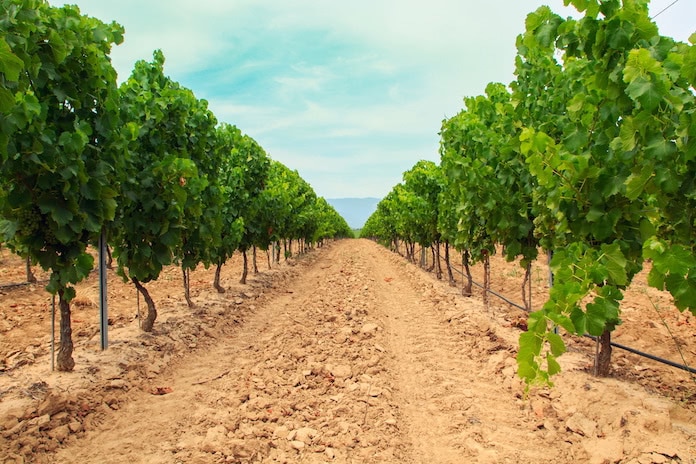
Pinot gris produces particularly good wines on loess and limestone soils, while heavy clay soils are less suitable for its cultivation. Even though it is a mutation directly descended from Pinot Noir, it tolerates much more fertile soils than its original red grape. This one likes it rather sparse in comparison.
Pinot gris – maturity and harvest
Pinot gris, like Pinot blanc, belongs to the early ripening grape varieties. Due to their direct relationship, it is not surprising that both can be harvested almost at the same time.
Due to its densely berried grapes, Pinot Gris has a strong tendency to form botrytis. The gray mold rot is especially wanted in the production of noble sweet wines and is considered noble rot. However, for this the grapes must be ripe at the beginning of the infestation. If the fungus attacks still unripe berries, these do not ripen further, are unusable for winemaking and must be sorted out.
Botrytis is undesirable in the production of dry wines. Excessive infestation causes a bitter taste and a musty to rotten odor.
Where the grape variety is grown
Although its homeland is in France, the largest area planted with Pinot Gris is in Italy, where it goes by the name Pinot grigio. Here it can be found on almost 19,000 hectares (as of 2016).
The second most common growing area is in the USA. This fact is due to the American Pinot Grigio boom of the 1970s and 80s. Germany is close behind in third place with just over 7,000 hectares.
| Country | Vineyard area in hectares |
| Italy | 18.821 * |
| USA | 7462 * |
| Germany | 7.069** (2019) |
| Australia | 3.652 * |
| France | 2.867 * |
| New Zealand | 2.422 * |
| Hungary | 1.594 * |
| Romania | 1.561 * |
| Republic of Moldova | 1.208 * |
| Czech republic | 826 * |
*) Source: K. Anderson, N. R. Aryal: Database of National, Regional and Global Winegrapes Bearing areas by Variety, 1960 to 2016 **)Source: Federal Statistical Office (Destatis)
Fun Fact:
Although Pinot gris is one of the Burgundy varieties, it is no longer permitted in Burgundy. In Champagne, on the other hand, it does, but there it does not occupy a significant area. Just one hectare out of a total of 34,000 are planted with it – i.e. 0.003 percent.
Steel, big wood & barrique – The many aging and stylistic directions of the Grauburgunder
Pinot gris is used to make just about every style of wine imaginable. However, the vast majority of his wines are plain and low-acid, Zechwein. The small remainder is distributed over all levels of the quality pyramid and types. From noble sweet Trockenbeerenauslesen to complex Grosse Gewächse and sparkling wines with over 14% vol. Alcohol you will find almost everything the wine world has to offer.
The different styles of Pinot Gris
Because the many varieties and qualities of its wines are so varied, I will go into a little more detail about the individual vinification options and associated styles in the following sections.
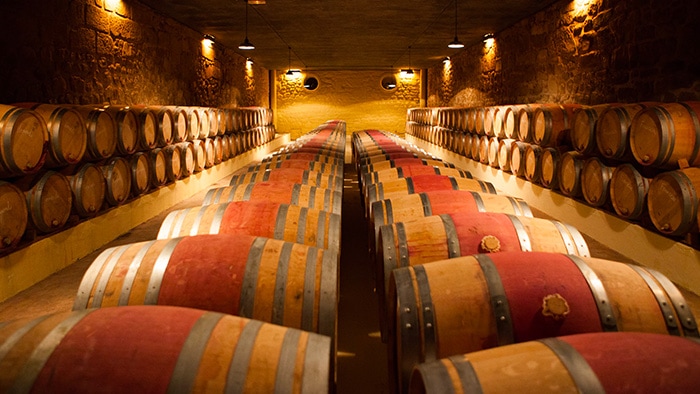
However, one thing can be said in advance: only two regions grow Pinot Gris to produce first-class wines: the French Alsace and Germany. In this country, especially in the Palatinate and Baden. Germany’s southernmost winegrowing region is also the only one in which the grape variety is permitted as VDP Großes Gewächs®. For example, the Franz Keller, Salwey and Wöhrle wineries regularly produce top-level German Pinot Gris.
Fresh and light wines from the steel tank
Extremely light, low-acid wines for which the grapes are not harvested fully ripe. This style arrived in the 1970s from northern Italy to central Europe and the United States, where it gained such enormous popularity that the Italian name of the grape variety (Pinot grigio) became synonymous with the style. Was he far more digestible than Riesling or Sauvignon Blanc thanks to its low acidity.
Even today it is one of the most popular variants and is considered a classic summer wine.
Top wines from the wooden barrel
Pinot gris from wood barrels are described with aromas of vanilla, caramel and toast. The smaller the barrel used, the more intense these notes emerge. At best, the wood thus brings more complexity to the wine. In the worst case, however, it masks the character of the grape. Pinot gris from the wood like to have a buttery melt, which is noticeable as an oily feeling in the mouth. This is due to a malolactic fermentation that the wines undergo in part. In it, the pungent malic acid is converted into softer lactic acid. The process is also called biological acid degradation (BSA for short).
Dessert wines from noble rot grapes
The noble sweet representatives are produced exclusively from ripe to overripe grapes and, as Trockenbeerenauslese, not infrequently have a residual sugar content of more than 180 g/L. The nose is exotic and dense with aromas of mango, caramel and orange. On the palate, they often seem heavy, sticky and flat, as Pinot Gris lacks the necessary acidity to keep the high sugar content in a flavorful balance. As a result, many of these wines have a reputation for being “boring sugar bombs.” Individual exceptions confirm the rule here as well.
Noble sweet Pinot Gris is a good example of how important acidity is in wine. Although they often carry only half the residual sugar compared to a Riesling Trockenbeerenauslese, the Rieslings seem much fresher and more exciting in direct comparison, as their high acidity keeps the sugar in check.
Pinot gris as rosé wine
For a true red wine, the grapes of the Pinot Gris have too little color pigments in their berry skin. If you process it like a red grape variety, you get a bright, copper-colored rosé. Aromatically, the fragrant wines are reminiscent of raspberries and, due to the contact with the skins, they have a light but still perceptible tannic structure.
The taste of Pinot Gris
Pinot gris is known by many for its lean, low-acid wines with delicate aromas of citrus and honeydew melon.
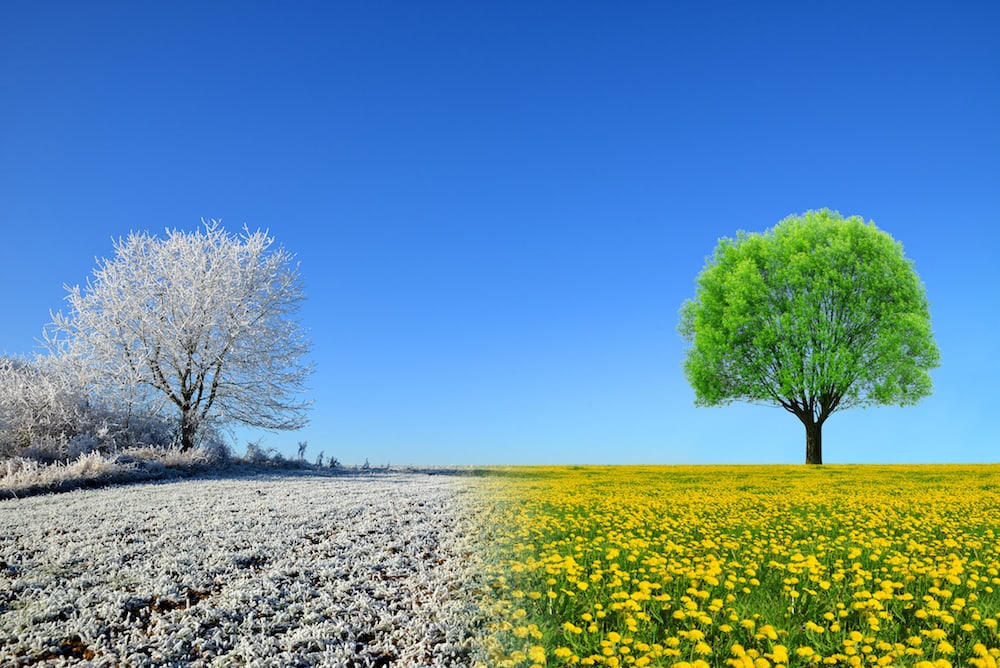
However, there are also broad-shouldered varieties with a golden yellow color and an intense aroma reminiscent of ripe pineapple, mango and dried fruit. These wines often have undergone malolactic fermentation, which brings buttery hints and a certain melting.
Vegetable notes of beans and peppers can also be found in some wines. It is not uncommon for Pinot Gris to possess stony mineral tones reminiscent of crushed limestone.
Warm Climate vs. Cool Climate
Pinot gris from warm or cold climates are quite easy to distinguish from each other. Pinot gris from cool regions have a noticeably higher acidity and present themselves through clear aromas of citrus and white flowers.
In stark contrast are wines from warm zones like Australia or California. The grapes reach a much higher degree of ripeness here and produce full-bodied, low-acid wines with an exotic bouquet and more alcohol.
Alsace vs. North Italy
Admittedly, the comparison between Alsace and Italy is not entirely fair, but it shows how incredibly diverse the grape variety can present itself. This comparison focuses on the dry wines, although Alsatian Pinot Gris is best known for its off-dry to noble sweet variants.
The wines from eastern France have a stable body and a complex spectrum of aromas reminiscent of ripe peaches, sugar melons and exotic fruits. Responsible for this are the many hours of sunshine and the harvesting of the crop at maximum ripeness. In addition, spicy and mineral notes can be detected, due to the volcanic soils of Alsace. Alsatian Pinot Gris can be enjoyed young without any problems, but in individual cases they can also develop over several years in the bottle. Especially Pinot gris from Grand Cru sites are predestined for this.
It is quite different with a Pinot grigio from the north of Italy. Here the climate is much cooler and the grapes are deliberately harvested earlier. The cold and the not fully matured grapes produce wines weak in color and slender. Aromatically, they are much simpler and have a dominant citrus aroma that is readily accompanied by a bitter minerality. Pinot grigio is best drunk young and is known worldwide as a digestible summer wine.
The color of the Pinot Gris
Thanks to its dark berry skin, Pinot gris has a wide color spectrum – from almost colorless to amber. The color of his wines gives a clear indication of their production and what awaits you in the glass.
If it presents itself almost colorless and shows green reflections, the grapes were harvested early and fermented in steel tanks. In the glass you can expect a light wine with clear citrus aromas and mineral hints.
If a pale yellow wine sparkles towards you, it is almost certainly a Pinot Gris that has been harvested fully ripe. Aging in large wooden barrels is also conceivable. Here you can already expect somewhat more complex aromas of melons, peaches and citrus. Exotic fruits are also not uncommon.
A golden yellow Pinot gris is produced either by short contact with the skins or by aging in small wooden barrels, such as the barrique. Since only fully ripe and healthy grapes are suitable for this, we shift up a gear here. The exotic fruits such as pineapple and mango should clearly dominate and only be accompanied by citrus notes. This is joined by vanilla and caramel aromas, provided barrique aging. If you notice a buttery aroma, the wine has undergone at least partial malolactic fermentation. The palate then reveals a fine, oily feel and a milder acidity as the sharp malic acid has been transformed into the much softer lactic acid.
If the Pinot Gris shines in a rich copper tone, it was produced like a red wine, i.e. fermented on the mash, which releases the color pigments from the skins. These wines have a clearly perceptible tannin framework.
Pinot gris for dinner
Due to its wide range, Pinot gris is suitable as a food companion for a wide variety of starters, main courses and even desserts.
Classically, dry, fruity Pinot Gris is mainly served with wine:
- Chicken breast fillet
- Seafood
- Pasta dishes
Gray Burgundy from the barrique, on the other hand, is better suited to:
- Leg of lamb
- Deer
- Wild fowl (e.g. pheasant, guinea fowl or quail)
Sweet to noble Pinot gris are suitable to accompany desserts such as:
- Ricotta with honey
- Almond and Cherry Crumble
- Marzipan cookies
